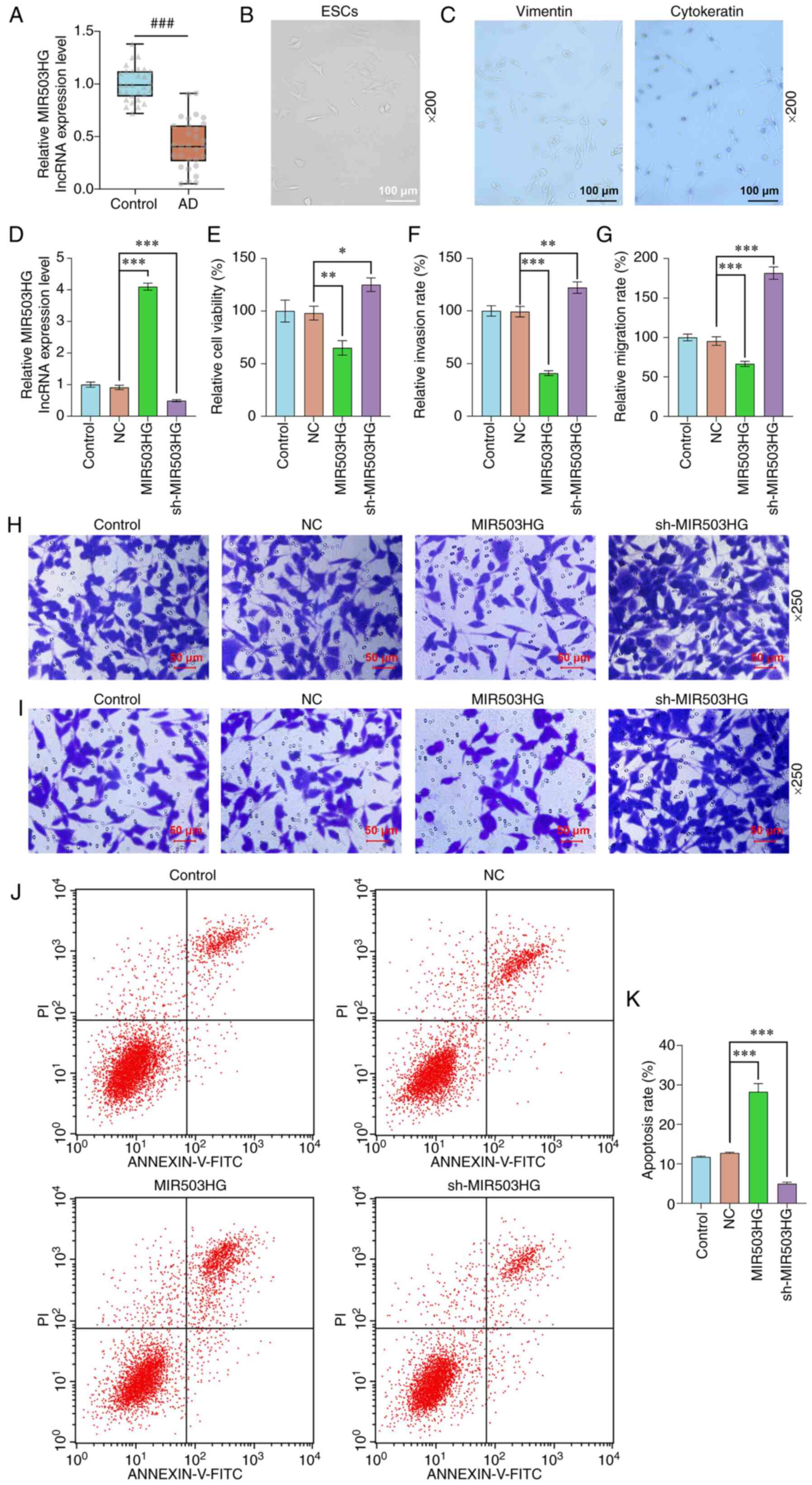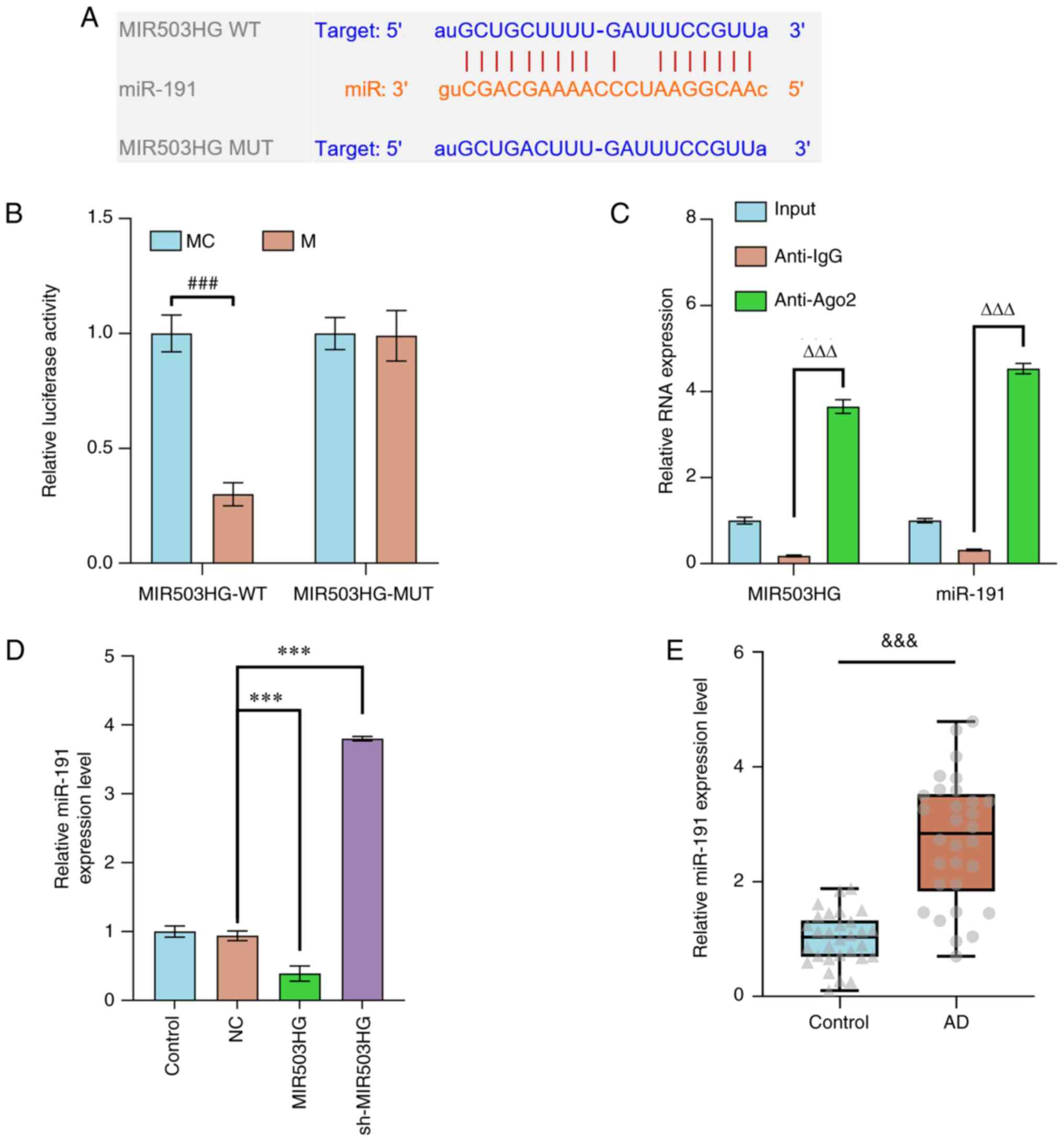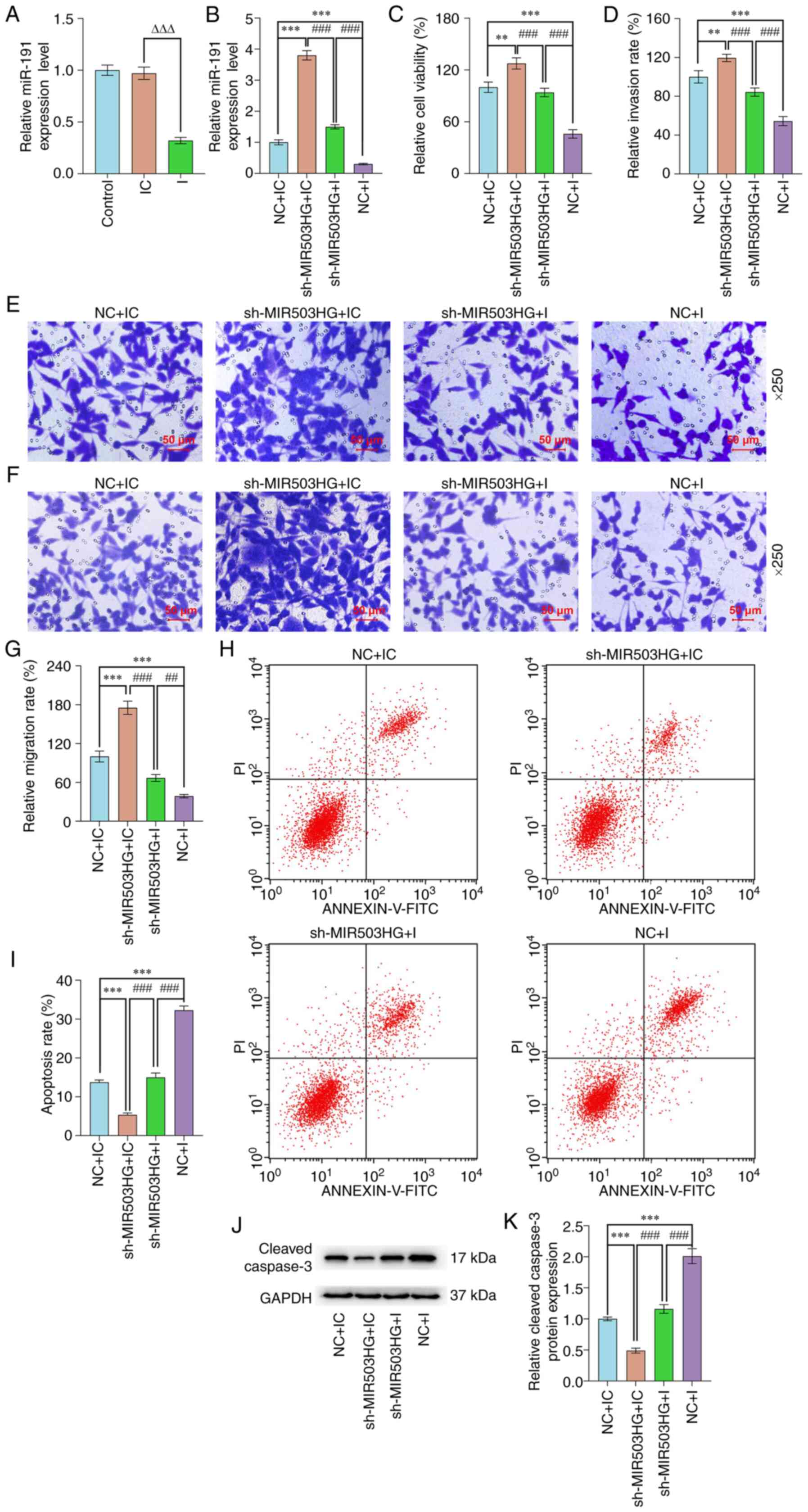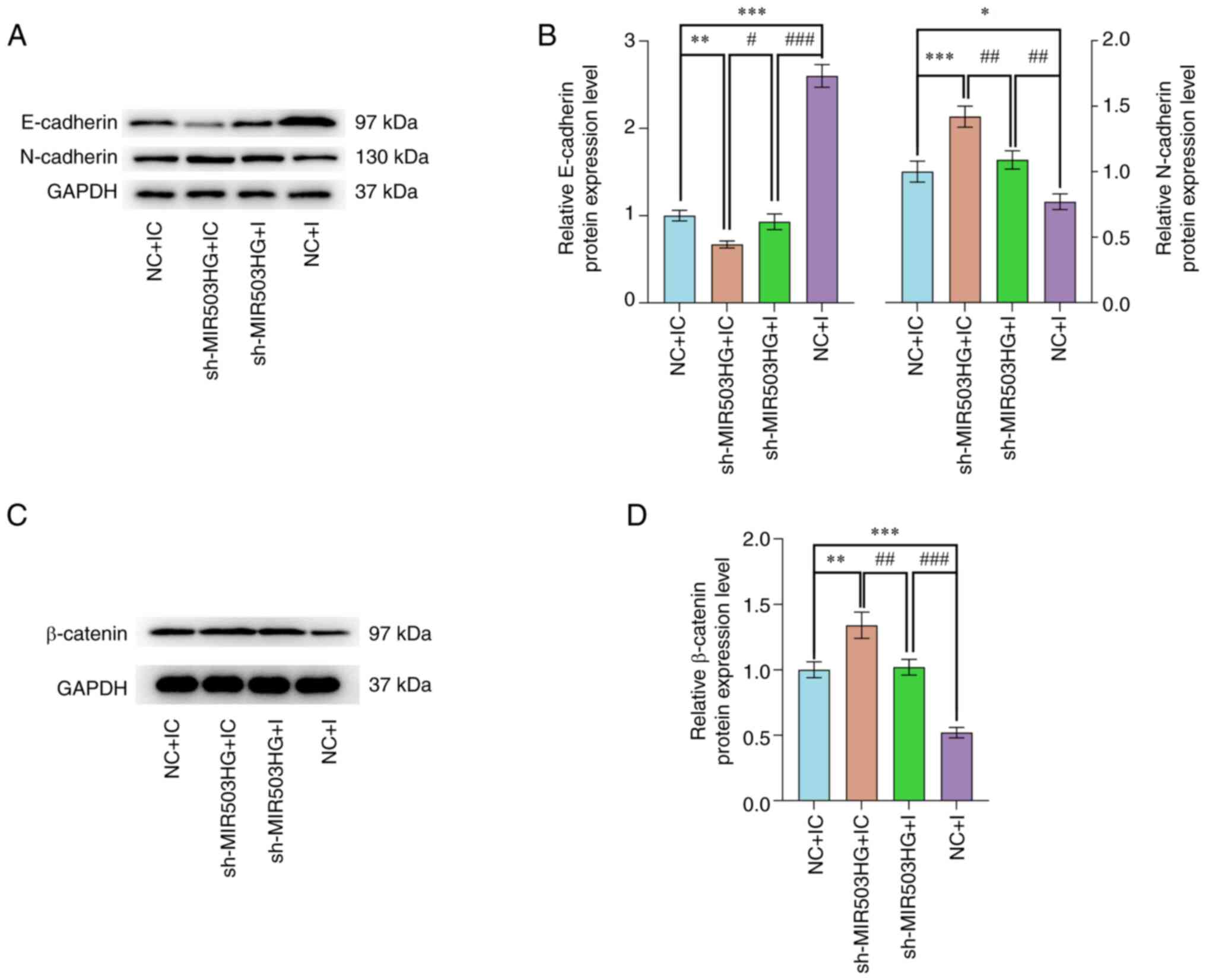|
1
|
Ferenczy A: Pathophysiology of
adenomyosis. Hum Reprod Update. 4:312–322. 1998.PubMed/NCBI View Article : Google Scholar
|
|
2
|
Lacheta J: Uterine adenomyosis:
Pathogenesis, diagnostics, symptomatology and treatment. Ceska
Gynekol. 84:240–246. 2019.PubMed/NCBI
|
|
3
|
Leyendecker G, Bilgicyildirim A, Inacker
M, Stalf T, Huppert P, Mall G, Böttcher B and Wildt L: Adenomyosis
and endometriosis. Re-visiting their association and further
insights into the mechanisms of auto-traumatisation. An MRI study.
Arch Gynecol Obstet. 291:917–932. 2015.PubMed/NCBI View Article : Google Scholar
|
|
4
|
Harada T, Khine YM, Kaponis A, Nikellis T,
Decavalas G and Taniguchi F: The impact of adenomyosis on women's
fertility. Obstet Gynecol Surv. 71:557–568. 2016.PubMed/NCBI View Article : Google Scholar
|
|
5
|
Peric H and Fraser IS: The symptomatology
of adenomyosis. Best Pract Res Clin Obstet Gynaecol. 20:547–555.
2006.PubMed/NCBI View Article : Google Scholar
|
|
6
|
Vannuccini S and Petraglia F: Recent
advances in understanding and managing adenomyosis. F1000Rese.
8(F1000)2019.PubMed/NCBI View Article : Google Scholar
|
|
7
|
Khalifa MA, Atri M, Klein ME, Ghatak S and
Murugan P: Adenomyosis as a confounder to accurate endometrial
cancer staging. Semin Ultrasound CT MR. 40:358–363. 2019.PubMed/NCBI View Article : Google Scholar
|
|
8
|
Yuan H and Zhang S: Malignant
transformation of adenomyosis: Literature review and meta-analysis.
Arch Gynecol Obstet. 299:47–53. 2019.PubMed/NCBI View Article : Google Scholar
|
|
9
|
Vannuccini S, Luisi S, Tosti C, Sorbi F
and Petraglia F: Role of medical therapy in the management of
uterine adenomyosis. Fertil Steril. 109:398–405. 2018.PubMed/NCBI View Article : Google Scholar
|
|
10
|
Jiang JF, Sun AJ, Xue W, Deng Y and Wang
YF: Aberrantly expressed long noncoding RNAs in the eutopic
endometria of patients with uterine adenomyosis. Eur J Obstet
Gynecol Reprod Biol. 199:32–37. 2016.PubMed/NCBI View Article : Google Scholar
|
|
11
|
Zhou C, Zhang T, Liu F, Zhou J, Ni X, Huo
R and Shi Z: The differential expression of mRNAs and long
noncoding RNAs between ectopic and eutopic endometria provides new
insights into adenomyosis. Mol Biosyst. 12:362–370. 2016.PubMed/NCBI View Article : Google Scholar
|
|
12
|
Bhan A, Soleimani M and Mandal SS: Long
noncoding RNA and cancer: A new paradigm. Cancer Res. 77:3965–3981.
2017.PubMed/NCBI View Article : Google Scholar
|
|
13
|
Liang N, Zhang W, Wang H, Shi W, Wang L
and Ma L: Levonorgestrel ameliorates adenomyosis via lncRNA
H19/miR-17/TLR4 pathway. Drug Des Devel Ther. 14:3449–3460.
2020.PubMed/NCBI View Article : Google Scholar
|
|
14
|
Xu XY, Zhang J, Qi YH, Kong M, Liu SA and
Hu JJ: Linc-ROR promotes endometrial cell proliferation by
activating the PI3K-Akt pathway. Eur Rev Med Pharmacol Sci.
22:2218–2225. 2018.PubMed/NCBI View Article : Google Scholar
|
|
15
|
Fiedler J, Baker AH, Dimmeler S, Heymans
S, Mayr M and Thum T: Non-coding RNAs in vascular disease-from
basic science to clinical applications: scientific update from the
working group of myocardial function of the european society of
cardiology. Cardiovasc Res. 114:1281–1286. 2018.PubMed/NCBI View Article : Google Scholar
|
|
16
|
Tang H, Wu Z, Zhang Y, Xia T, Liu D, Cai J
and Ye Q: Identification and function analysis of a five-long
noncoding RNA prognostic signature for endometrial cancer patients.
DNA Cell Biol. 38:1480–1498. 2019.PubMed/NCBI View Article : Google Scholar
|
|
17
|
Cheng D, Jiang S, Chen J, Li J, Ao L and
Zhang Y: The increased lncRNA MIR503HG in preeclampsia modulated
trophoblast cell proliferation, invasion, and migration via
regulating matrix metalloproteinases and NF-κB signaling. Dis
Markers. 2019(4976845)2019.PubMed/NCBI View Article : Google Scholar
|
|
18
|
Fu J, Dong G, Shi H, Zhang J, Ning Z, Bao
X, Liu C, Hu J, Liu M and Xiong B: LncRNA MIR503HG inhibits cell
migration and invasion via miR-103/OLFM4 axis in triple negative
breast cancer. J Cell Mol Med. 23:4738–4745. 2019.PubMed/NCBI View Article : Google Scholar
|
|
19
|
Parrott E, Butterworth M, Green A, White
IN and Greaves P: Adenomyosis-a result of disordered stromal
differentiation. Am J Pathol. 159:623–630. 2001.PubMed/NCBI View Article : Google Scholar
|
|
20
|
Borisov E, Knyazeva M, Novak V, Zabegina
L, Prisyazhnaya T, Karizkiy A, Berlev I and Malek A: Analysis of
reciprocally dysregulated miRNAs in eutopic endometrium is a
promising approach for low invasive diagnostics of adenomyosis.
Diagnostics (Basel). 10(782)2020.PubMed/NCBI View Article : Google Scholar
|
|
21
|
Hu YL, Zhang YX, Liu N, Liu H and Yuan YC:
LncRNA MIR503HG regulated cell viability, metastasis and apoptosis
of cervical cancer via miR-191/CEBPB axis. Eur Rev Med Pharmacol
Sci. 25:3200–3210. 2021.PubMed/NCBI View Article : Google Scholar
|
|
22
|
Li J, Yanyan M, Mu L, Chen X and Zheng W:
The expression of Bcl-2 in adenomyosis and its effect on
proliferation, migration, and apoptosis of endometrial stromal
cells. Pathol Res Pract. 215(152477)2019.PubMed/NCBI View Article : Google Scholar
|
|
23
|
Livak KJ and Schmittgen TD: Analysis of
relative gene expression data using real-time quantitative PCR and
the 2(-Delta Delta C(T)) method. Methods. 25:402–408.
2001.PubMed/NCBI View Article : Google Scholar
|
|
24
|
Xu W, Ji J, Xu Y, Liu Y, Shi L, Liu Y, Lu
X, Zhao Y, Luo F and Wang B: MicroRNA-191, by promoting the EMT and
increasing CSC-like properties, is involved in neoplastic and
metastatic properties of transformed human bronchial epithelial
cells. Mol Carcinog. 54 (Suppl 1):E148–E161. 2015.PubMed/NCBI View
Article : Google Scholar
|
|
25
|
Feng T, Wei S, Wang Y, Fu X, Shi L, Qu L
and Fan X: Rhein ameliorates adenomyosis by inhibiting NF-κB and
β-Catenin signaling pathway. Biomed Pharmacother. 94:231–237.
2017.PubMed/NCBI View Article : Google Scholar
|
|
26
|
Vercellini P, Bonfanti I and Berlanda N:
Adenomyosis and infertility: Is there a causal link? Expert Rev
Endocrinol Metab. 14:365–367. 2019.PubMed/NCBI View Article : Google Scholar
|
|
27
|
Hashimoto A, Iriyama T, Sayama S, Nakayama
T, Komatsu A, Miyauchi A, Nishii O, Nagamatsu T, Osuga Y and Fujii
T: Adenomyosis and adverse perinatal outcomes: Increased risk of
second trimester miscarriage, preeclampsia, and placental
malposition. J Matern Fetal Neonatal Med. 31:364–369.
2018.PubMed/NCBI View Article : Google Scholar
|
|
28
|
Shin YJ, Kwak DW, Chung JH, Kim MY, Lee SW
and Han YJ: The risk of preterm births among pregnant women with
adenomyosis. J Ultrasound Med. 37:1937–1943. 2018.PubMed/NCBI View Article : Google Scholar
|
|
29
|
Aleksandrovych V, Basta P and Gil K:
Current facts constituting an understanding of the nature of
adenomyosis. Adv Clin Exp Med. 28:839–846. 2019.PubMed/NCBI View Article : Google Scholar
|
|
30
|
Dueholm M: Uterine adenomyosis and
infertility, review of reproductive outcome after in vitro
fertilization and surgery. Acta Obstet Gynecol Scand. 96:715–726.
2017.PubMed/NCBI View Article : Google Scholar
|
|
31
|
Fiedler J, Breckwoldt K, Remmele CW,
Hartmann D, Dittrich M, Pfanne A, Just A, Xiao K, Kunz M, Müller T,
et al: Development of long noncoding RNA-based strategies to
modulate tissue vascularization. J Am Coll Cardiol. 66:2005–2015.
2015.PubMed/NCBI View Article : Google Scholar
|
|
32
|
Muys BR, Lorenzi JC, Zanette DL, Lima e
Bueno Rde B, de Araújo LF, Dinarte-Santos AR, Alves CP, Ramão A, de
Molfetta GA, Vidal DO and Silva WA Jr: Placenta-enriched LincRNAs
MIR503HG and LINC00629 decrease migration and invasion potential of
JEG-3 cell line. PLoS One. 11(e0151560)2016.PubMed/NCBI View Article : Google Scholar
|
|
33
|
Li Y, Zhang Q, Liu F, Zhang Z, Zou Y, Yang
B, Luo Y, Wang L and Huang O: Inhibition of formin like 2 promotes
the transition of ectopic endometrial stromal cells to epithelial
cells in adenomyosis through a MET-like process. Gene. 710:186–192.
2019.PubMed/NCBI View Article : Google Scholar
|
|
34
|
Cao X and Fan QL: LncRNA MIR503HG promotes
high-glucose-induced proximal tubular cell apoptosis by targeting
miR-503-5p/Bcl-2 pathway. Diabetes Metab Syndr Obes. 13:4507–4517.
2020.PubMed/NCBI View Article : Google Scholar
|
|
35
|
Lee JM, Dedhar S, Kalluri R and Thompson
EW: The epithelial-mesenchymal transition: new insights in
signaling, development, and disease. J Cell Biol. 172:973–981.
2006.PubMed/NCBI View Article : Google Scholar
|
|
36
|
Yang J and Weinberg RA:
Epithelial-mesenchymal transition: At the crossroads of development
and tumor metastasis. Dev Cell. 14:818–829. 2008.PubMed/NCBI View Article : Google Scholar
|
|
37
|
Zheng D, Duan H, Wang S, Xu Q, Gan L, Li J
and Dong Q: FAK regulates epithelial-mesenchymal transition in
adenomyosis. Mol Med Rep. 18:5461–5472. 2018.PubMed/NCBI View Article : Google Scholar
|
|
38
|
Zhang C, Wang P, Mohammed A, Zhou Z, Zhang
S, Ni S and Tang Z: Function of adipose-derived mesenchymal stem
cells in monocrotaline-induced pulmonary arterial hypertension
through miR-191 via regulation of BMPR2. Biomed Res Int.
2019(2858750)2019.PubMed/NCBI View Article : Google Scholar
|
|
39
|
Oh SJ, Shin JH, Kim TH, Lee HS, Yoo JY,
Ahn JY, Broaddus RR, Taketo MM, Lydon JP, Leach RE, et al:
β-Catenin activation contributes to the pathogenesis of adenomyosis
through epithelial-mesenchymal transition. J Pathol. 231:210–222.
2013.PubMed/NCBI View Article : Google Scholar
|


















